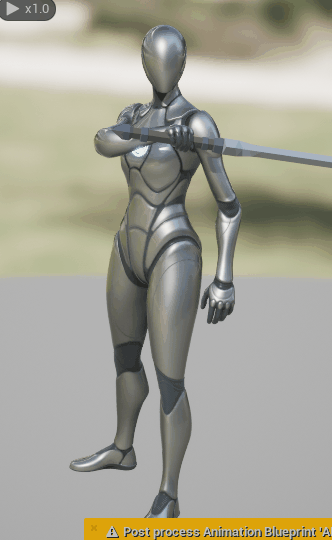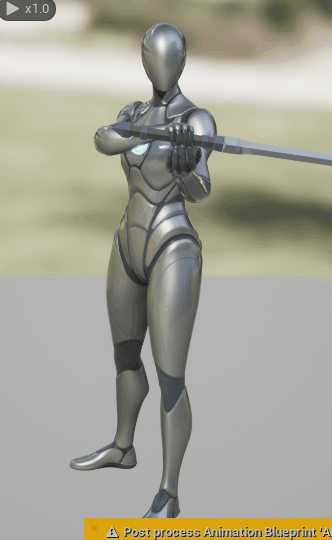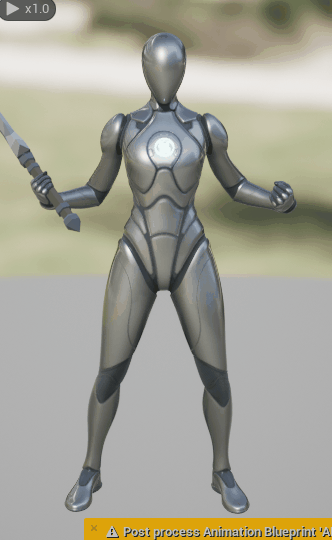Log 09: To Consider Morphing
- Bruce McCormack

- Nov 12, 2023
- 5 min read
Updated: Nov 18, 2023
For this past week I started working on one of the central thematic mechanics and elements to the game: Transformation, or as it is better known in Power Rangers "Morphing" (I will be using "morphing" from here on out due to my greater familiarity to the Power Rangers franchise). This is where the rangers go from their civilian forms to powered up and armored fighting forms.
There are two styles of morphing in Power Rangers: the quick (almost instantaneous) in-universe version, and the drawn out almost ritualistic cinematic version purely for the enjoyment of the viewing audience. If I want the full experience, I need to have a way for both to be in my game.
The style of morphing that most people think of (even non-fans of Power Rangers if the number of parodies out there is any indication) is the long, drawn out, full team

The morph has two stages, the first is some kind of ritualistic hand ritual, followed by either all the rangers at once, or each ranger in sequence, undergoing a drawn out transformation. This transformation find the rangers standing in place, then after the
transformation, doing a pose and 9 times out of 10 an explosion goes off around / behind them.

The quick transformation, while still utilizing the hand movement ritual, can take place while moving and results in an instantaneous transformation. The ranger will skip the posing and explosions and go right into the combat.
The key mechanical difference between the two styles is that one is quicker and allows continuous movement. So then I'm left with the conundrum of what reason can I give the player to want to perform the extended sequence? My answer is to make it useful. I have three specific ways I thought of: the first is to answer the question of "Why don't the monsters attack them while they're morphing?" Answer: make the rangers invulnerable while morphing. I'll probably also try and make it so enemies won't try to attack while the morphing is happening in order to mimic the shows, but this offers morphing as a potential defensive measure that also powers up the player character. The second way is to give the characters a full-heal when they morph. This also has precedence in the shows, especially in the finales the rangers will morph one final time and all their damage will be gone. The third is to give purpose to the purposeless explosions that result from the longer transformations. Basically have the explosions deal damage to enemies and blast them away from the rangers. Thanks to Power Rangers: RPM for doing it first and establishing precedence.

The next design hurdle I had to get past is the pre-morph ritual. How do I translate a series of arcane hand gestures and poses into something the player can feel like they're doing as well, and not just the character on the screen? Since this isn't going to be a motion-controlled game, that leaves me with just what the player can do with their fingers on either a game pad or a mouse and keyboard. The easy (and boring) way would be a series of button prompts like little QTE's that the player can do but then how do I start the sequence and not make it boring and drawn out? The answer I decided to go with came from studying the modern gamepad. I want something relatively easy to do, but complicated enough that it can't be accidentally done. That's when the thought struck me: the triggers and shoulder buttons. These buttons already have uses in the game, but what if they were used together and in a set sequence? It could serve as a translation of the complex poses and hand/arm movements that Power Rangers is known for.
The first stage of the sequence is the press the two trigger buttons down and hold them, then press and hold the two shoulder buttons, finally clicking both thumb-sticks. Each stage will play a looping animation until the next engages. This is how the player can activate the longer transformation sequence. If they want the quicker one, they just need to press the shoulder and trigger buttons at the same time. That way its similar enough that it feels like it should do the same thing, but different and quick enough that the player can know the difference. This was also where I ran into my first problems.
Unreal's Enhanced Input functionality contains a special trigger modifier called "Chorded Action", which means pressing one button while either pressing or holding another will result in a new effect. Why I thought this would be helpful should be obvious, whereas the problem is a bit more subtle, but glaringly obvious once you think about it. Chorded Action only works for two buttons at a time, technically one input and one enhanced input, so maybe I could have made it work for all six, but it would have been a tangled web of inputs and modifiers and impossible to debug if something were to go wrong.
So, instead, I did it all myself. Each button press either already had associated method calls in my character blueprints or are meant to anyway. All I had to do was introduce an additional bool for each input and if all of them are true within a set time frame, then I either call the Quick Morph method, or activate the next stage of the Morph sequence.
The next thing I wanted to work on was creating some basic animations to use. First though, I had to learn how to create animations inside Unreal. It was surprisingly hard to find an initial tutorial about animating in Unreal, but eventually I learned about the Sequencer and creating control rigs for different skeletons. Once I had that done, it was relatively easy to make some basic animations:
Yes, I know, they aren't very good; but as much as I like animation, I've never claimed to be a professional. Once I had the animations in hand, it was relatively easy to slip them into the animation blueprint and hook up their logic to be dependent on the input bools.
Before I could work further on the actual transformations, I had to start in on getting the Synty assets and characters in place, at least for the test ranger that would be a parent class to the actual rangers that would be in the game. This ultimately lead me to settle on a more fantasy theme for my game, as the fantasy/medieval themed "Modular Heroes" pack offered the closest I could get to a color-codable full body "uniform" for the rangers. I guess that means I'll have to figure out horse animations at some point. That being said, Synty characters require some extra steps to work with standard Unreal mannequin animations. I had to create create a custom IK rig and retargeter between the Synty Modular skeleton and the UE5 mannequin skeleton. Then hook up an animation blueprint with a "Retarget Pose from Mesh" node so it could copy a parent skeletal mesh that actually carried the animation data. So, that's one basic mannequin skeletal mesh to do all the animation blueprint logic. Then a child skeletal mesh for the civilian form of the ranger for the Synty mesh to copy the animation logic.
Then, I had to figure out / learn how modular characters work in Unreal. Fortunately it was relatively easy and there were a couple tutorials for this: first you have a skeletal mesh that has all the animation data on it, then you have a bunch of child skeletal meshes (with the same skeleton) and in the construction script you set them all as the targets for the "Set Leader Pose Component" node. And viola: a bunch of modular pieces following the same animation perfectly and without showing any seams. Of course, because of the way the modular character pack and my box dissolve materials work, there are 11 children, each with their own box collision component. All of which I need to coordinate to make the morphing work.
Enough with the setup and preamble. Next post I'll start talking about my struggles with actually getting the morphing working.







Comments